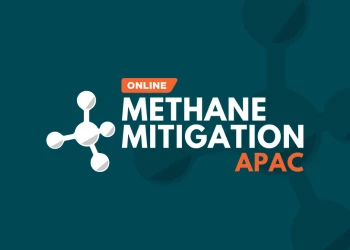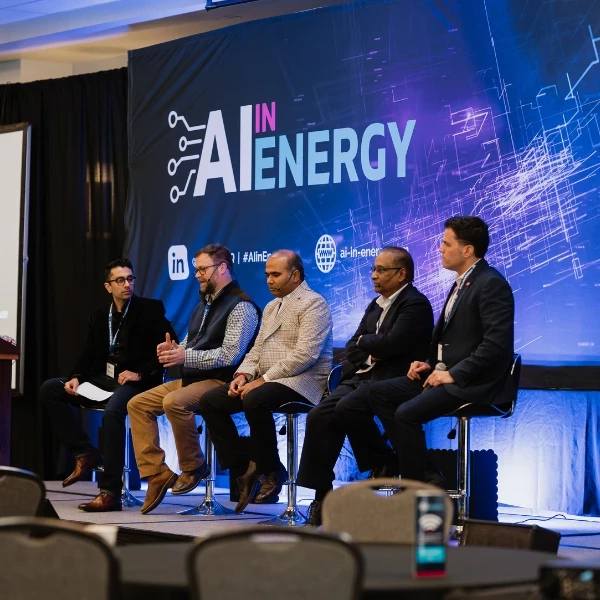Case Study: How to Successfully Communicate the Value of Cutting-Edge AI Across the Enterprise
Insights from Strategena and Chevron Phillips Chemical Company.
Add bookmark
Artificial Intelligence (AI)’s potential to accelerate growth and transform the face of the energy sector can no longer be ignored, especially for industries that are built upon complicated processes, and rely heavily on data and analytics for innovation. Within the energy sector, where efficiency, safety, and innovation are paramount, the integration of AI holds immense potential.
However, getting buy-in from C-Suite and the frontline can prove to be challenging, along with identifying the right digital decisions that align with overall business objectives. Ahead of our AI in Energy Summit, we asked event speakers Laura Tibodeau, Managing Partner at Strategena, and Ra Inta, Head of Data Science at Chevron Phillips Chemical Company to share their insights on how to navigate the realm of cutting-edge AI in the energy sector.
Read as they offer individual perspectives into the strategic deployment of AI, illustrating how organizations can leverage technology to unlock new opportunities, drive sustainable growth, and shape the future of energy operations.
How are you employing cutting-edge AI within your operations?
Laura Tibodeau, Strategena: Cutting-edge AI technologies offer a wealth of opportunities to revolutionize operations within the energy industry. For us, harnessing AI for operations relates to:
1. Predictive Maintenance (Versus Time-Based Maintenance)
AI can analyze vast amounts of data from sensors and equipment to predict potential equipment failures before they occur. By harnessing predictive maintenance systems (powered by AI), companies can minimize downtime, optimize maintenance schedules, enhance reliability and safety, extend the lifespan of critical assets, and optimize maintenance costs.
2. Cyber Security
AI technologies enable cyber security functions to proactively identify and respond to anomalous activities and potential security threats through Machine Learning Algorithms, Behavior Analytics, User and Entity Behavior Analytics (UEBA), Anomaly Detection and Real-time Monitoring and Alerts.
3. Asset Management
AI streamlines asset management processes by providing insights into the performance, health, and optimal utilization of infrastructure assets. By employing AI-powered asset management tools, companies can make data-driven decisions on asset maintenance, replacement, and investment, leading to improved operational efficiency and cost-effectiveness.
Ra Inta, CPChem: At Chevron Phillips Chemical (CPChem), we are lucky to operate within an environment that encourages innovation in the digital space. We have an internal team that builds customized machine learning products and pipelines. These applications cover various aspects of our business, ranging from optimizing chemical processes to enhancing supply chain management and forecasting accuracy. We have reached a mature stage in traditional machine learning workflows, including our approach to Machine Learning Operations (MLOps).
READ: Gen AI in Focus: How to Strategize in the Era of Technological Evolution
Currently, we are scaling up our internal capacity for building Gen AI-based applications. While many of these applications are still in the proof-of-concept stage, several have progressed to demonstrate tangible business value. As with most enterprises, we possess a substantial volume of data, both structured and unstructured, brimming with untapped potential. Under our Performance by Design initiative, whereby every member of the company is encouraged to submit ideas, a significant portion of these ideas relate to Machine Learning and/or Gen AI.
How can you effectively communicate a digital innovation strategy, with its tangible and intangible benefits, to C-Suite and the frontline?
Laura Tibodeau, Strategena: Effectively communicating your digital innovation strategy, along with its tangible and intangible benefits is critical for driving organizational alignment, engagement, and successful implementation.
When communicating to senior executives, it’s important to frame your digital innovation strategy in terms of how it aligns with the organization's overall business goals, objectives, and long-term vision. Emphasize how the strategy will drive revenue growth, cost savings, market differentiation, and competitive advantage.
Additionally, involve frontline employees (subject matter experts) early in the communication process by directly soliciting their feedback, ideas, and concerns regarding digital innovation opportunities. Foster a culture of open communication, transparency, and collaboration to empower employees to contribute to the strategy's success.
Ensure that your communications are clear, concise, and consistent across all levels of the organization. Use multiple channels, including town halls, newsletters, intranet portals, and one-on-one meetings, to reach both the senior executives and frontline effectively.
Ra Inta, CPChem: Effectively communicating abstract strategies can be challenging, especially when the technology is new. For Generative AI, we strategically chose several proofs-of-concept that showcased potential value for various use cases across the business. These demonstrations highlighted techniques that could be applied to other scenarios. Additionally, they provided concrete illustrations of the potential risks associated with the new tools, presented in a context our business leaders could understand in a tangible - and actionable - way.
How do you align digital decisions with corporate values and market demands?
Ra Inta, CPChem: We utilize an internal system to assess the value-to-effort ratio of potential use cases. The challenges are determined by market dynamics, operational demands, and corporate values.
For example, at CPChem, we prioritize projects that align with our commitment to safety and sustainability. Hence, initiatives incorporating these values, ceteris paribus, are given precedence. Our digital decisions are driven by the potential value and our current technical capabilities. It's worth noting that this can sometimes be a moving target; showing what's possible can often stimulate further demand.
Laura Tibodeau, Strategena: Aligning digital decisions with corporate values and market demands is essential for ensuring strategic coherence, organizational integrity, and competitive relevance. Start by clearly defining and articulating your organization’s core values, mission, and vision. Take time to understand the principles that guide decision-making, shape culture, and define your organization's identity.
Next, take the time to conduct thorough market research, which includes competitive analysis and customer insights. This step is crucial for understanding current market trends, consumer preferences, and industry dynamics. Finally, engage your key stakeholders (such as employees, customers, partners, and industry experts) in the decision-making process to gather diverse perspectives and valuable insights.
READ: 5 Ways Artificial Intelligence (AI) Is Reshaping the Energy Sector
What methods do you use to establish a transparent and resilient framework for AI governance?
Laura Tibodeau, Strategena: Establishing a transparent and resilient framework for governance is essential to ensure ethical, accountable, and effective use of artificial intelligence technologies within an organization. I recommend that the AI policy handbook encompass thorough AI governance policies and procedures. It should clearly define the guidelines, principles, and standards for the ethical deployment of AI technologies and address crucial aspects such as data privacy, transparency, accountability, bias mitigation, and adherence to regulatory requirements.
Next, it is critical to implement strong data governance practices to safeguard the quality, integrity, and security of data utilized for training the AI models. Data quality assurance processes that track data lineage are essential to uphold data accuracy, relevance, and compliance with data protection regulations.
Finally, foster transparent communication by regularly reporting on AI governance practices, outcomes, and compliance with established guidelines. Provide stakeholders with updates on AI initiatives, risks, controls, and performance metrics to promote accountability, trust, and alignment with organizational values.
Ra Inta, CPChem: We’ve established a cross-functional Gen AI Task Force composed of representatives from Legal, IT Risk, Security, Compliance, Technical/Data, Organizational Change Management, Corporate Communications, and Leadership. This helps forge a cohesive policy governing the usage of Gen AI at CPChem, which outlines key risks such as data exfiltration, bias, and hallucination, and outlines approval and usage processes.
We have also created a Gen AI Community of Excellence which serves as a bidirectional conduit for communication between the business and the Task Force, fostering transparency into how decisions are made. We firmly believe that education is a key pillar in the successful adoption of Gen AI and hence have been tasked with implementing educational initiatives at an enterprise level.
Can you share top techniques to manage fear on the frontline to ultimately drive equitable outcomes?
Ra Inta, CPChem: Treat Gen AI as a new tool that excels in specific applications involving unstructured data. Nothing more, nothing less. Just like a nail-gun is ideal for constructing a timber-framed house but unsuitable for crafting a Faberge egg. Adopting this mindset helps shield against the constant hyperbole – and the inevitable backlash - when we realize we're probably still far from AGI (Artificial General Intelligence). Instead, we are much closer to leveraging Gen AI effectively with unstructured data than we previously anticipated. Keep your eye on the ball and the rest will take care of itself.
It is also imperative to acknowledge the concerns of those who fear that Generative AI threatens their job security. We emphasize that the most effective utilization of these tools is as decision aids for humans. We do not view the replacement of human labor as either feasible or productive, especially within our workforce, at least not within the next five years.
Laura Tibodeau, Strategena: Provide ongoing education and training programs to frontline employees to increase their understanding of AI technologies, their benefits, and their potential impact on their roles. Addressing misconceptions (earlier versus later) and building AI literacy will help alleviate fear and resistance towards the new technologies.
It is also important to implement robust change management processes to support the adoption of AI technologies by frontline employees. Provide resources, support networks, and training to help employees navigate changes, address resistance, and build confidence in using AI tools effectively.
READ: The First Benefit of Damage Mechanism Reviews
Interested in learning more?
Join us at our 15th Annual Operational Excellence in Oil & Gas Summit in Houston, from November 5-8, 2024 to learn more about implementing AI and digital transformation within the organization. This year's summit will feature exclusive workshops and case studies on 'Data and Artificial Intelligence as Assets for Operational Excellence', 'Inspiring Innovation Across your Organization', 'Maximizing the Operational Impact of Artificial Intelligence and Machine Learning', and more. Download the agenda for more information.





















